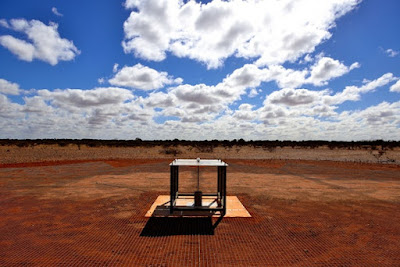Looking in the universe is like looking through time. And
this has led the astronomers from Arizona State University and MIT to find out
about the time when the first stars light up-which was just 180 million years
after the Big Bang. Astronomers call it the “Cosmic Dawn”.
In early years, universe was in total darkness. This phase
is generally referred to as the “Cosmic Dark Ages”. It was a phase when universe was
a very cold and a very dark place. It consisted of only hydrogen gas, which made
up the majority of the interstellar medium. Yet it was indistinguishable from
all the cosmic radiation that was left behind by the Big Bang.
But time passed and the matter started clustering together;
it grew larger and exerted enough pressure to start nuclear fusion. And this is how the first stars in our
universe flickered! The UV radiation emitted
by these stars reacted with the hydrogen in the surrounding and it’s this reaction
which was observed now!
 |
| Different phases from Big Bang till Now |
"This is the first real signal that stars are starting
to form, and starting to affect the medium around them," says Alan Rogers,
co-author of the new study. "What's happening in this period is that some
of the radiation from the very first stars is starting to allow hydrogen to be
seen. It's causing hydrogen to start absorbing the background radiation, so you
start seeing it in silhouette, at particular radio frequencies."
The team traced this signal back to 13.6 billion years- which
is approximately 180 million years, just after the Big Bang. Due to this, it is
the most ancient signal to be ever detected from the universe.
DETECTION OF THESE ANCIENT SIGNALS:
This detection was done by using the Experiment to Detect
Global Epoch-of-Reionization Signature (EDGES), which is a small radio antenna
that’s of size a tabletop. To make sure
that this equipment detected such sensitive signal, it was located in the remote
region of Australia, hundreds of kilometers away from any human radio
interferences.
 |
| Experiment to Detect Global Epoch-of-Reionization Signature (EDGES) |
Generally, neutral hydrogen emits radiation at a frequency
of 1,420 MHz. But due to the Doppler’s effect and the continuous expansion of
the universe, this frequency was reduced.
It is estimated that by the time it reaches Earth, it will be up to
100 MHz. So EDGES was set to receive frequencies between 100 to 200 MHz. But this didn’t work. As they assumed that
100 MHz would be when hydrogen would hotter than everything around it. So they adjusted the calculations and set the
frequency between 50-100 MHz.
This correction also draws certain conclusions. The
calculations suggest that the primordial universe was twice as cold as it was
thought to be- approximately -454 degree F. Scientists are still not sure about
this considerable chill. But soon, they will find out. Some say that it could
be related to Dark matter. The faint imprints left by these stars have some new
and unexpected evidences about the Dark matter. This could be the second major breakthrough
in this study of the Cosmic Dawn.

Comments
Post a Comment